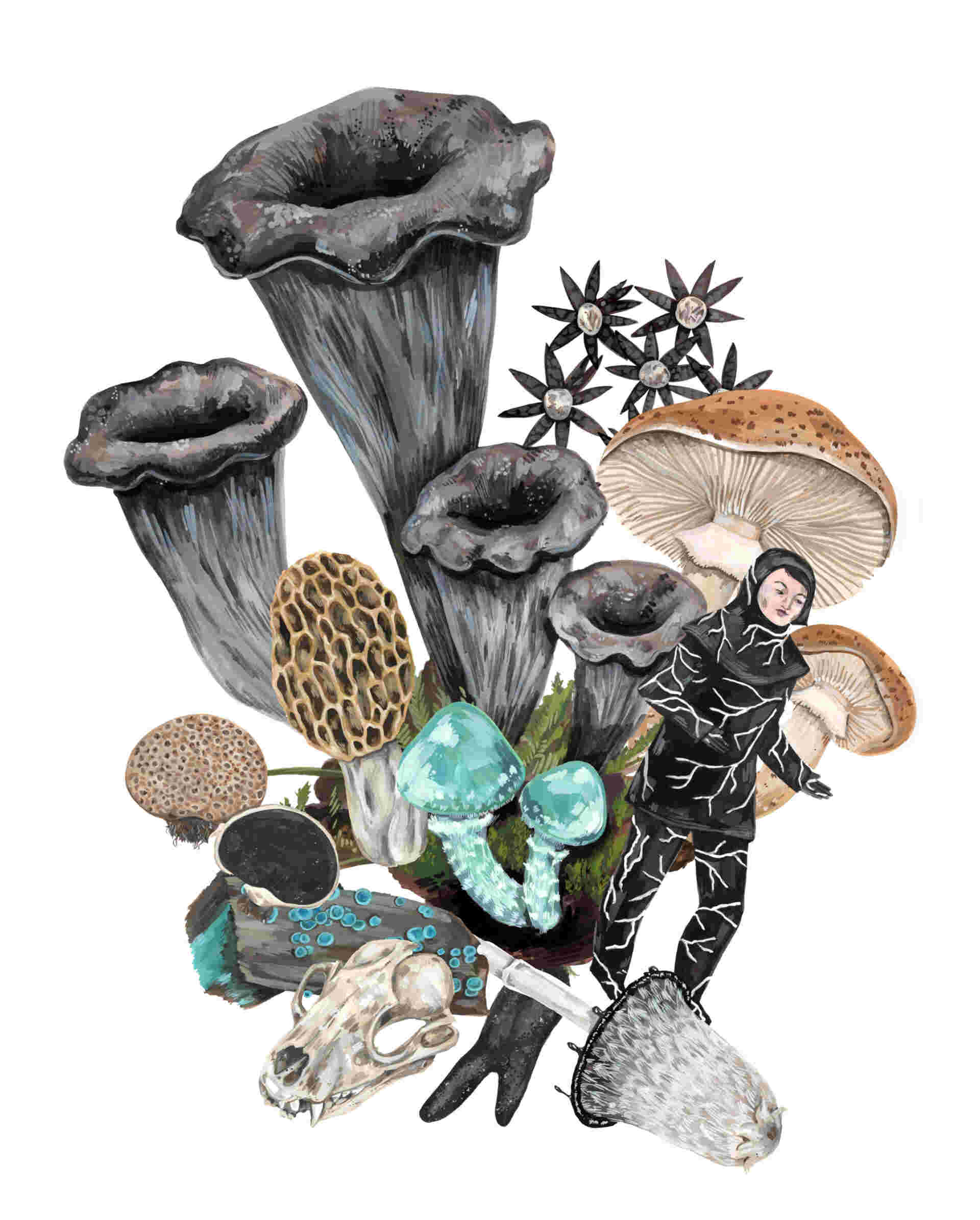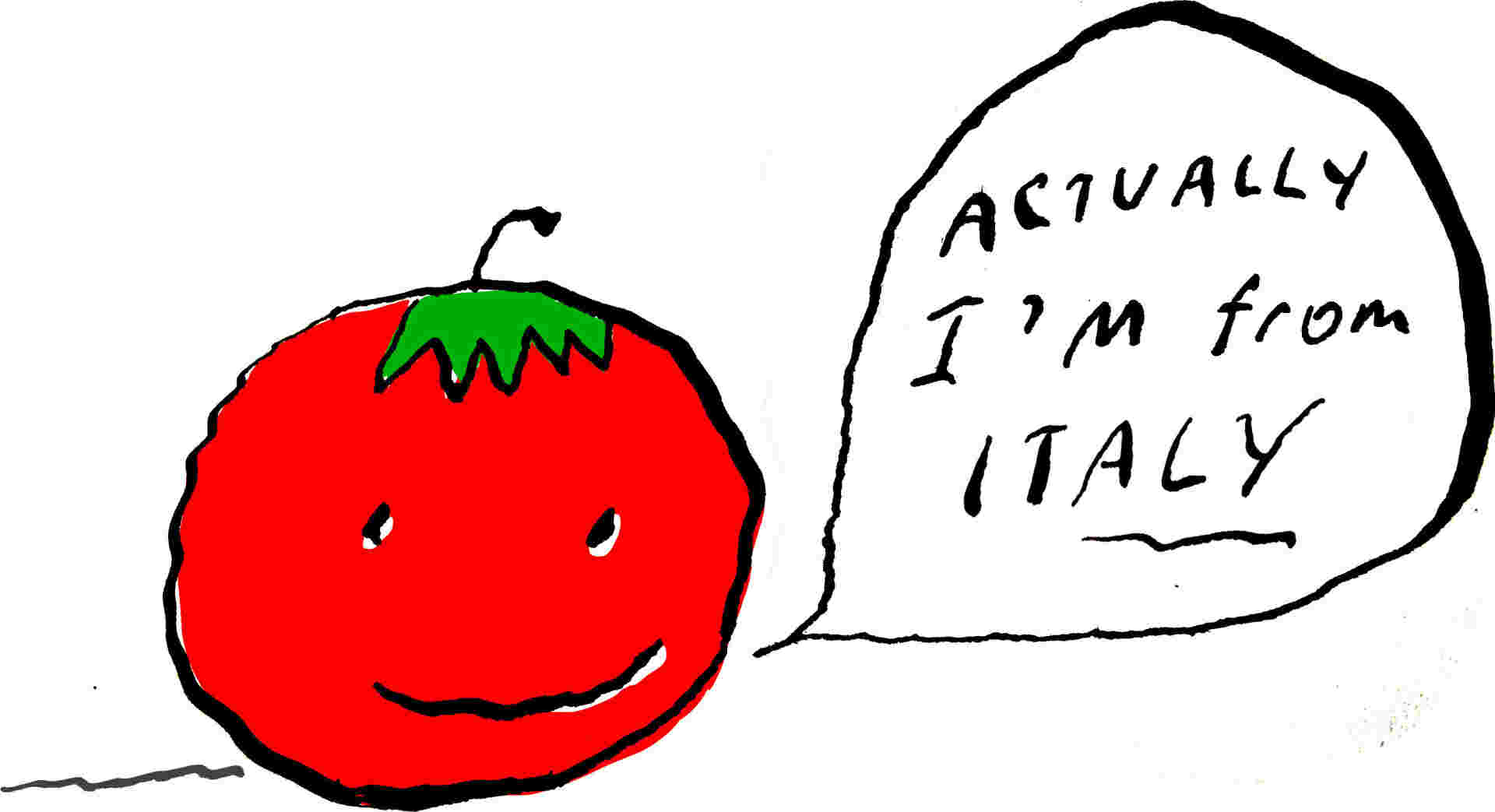
Hidden Kingdom
The Conversation On mushrooms, interdependence and artists’ role on the sustainability front.
By Sara Baron-Goodman
Illustration by Jason Logan

It dawned on me that you never see fruiting trees in North American cities. I grew up in Montréal, where picking fruit fresh from its source required a special field trip. In the summer, you could drive to the Eastern Townships or Laurentians and forage a small basket of wild blueberries or blackberries. The privilege of harvesting some farmer’s crop yield was something you had to pay for—and the experience was a bit gimmicky and geared toward schoolchildren, to teach them that fruit doesn’t just materialize in the grocery store, ready for consumption.
I’ve spent the last year and a bit living in Italy. In Piedmont, at the foot of the Alps, in a tiny town surrounded by agricultural land, I attended a university that waxed poetic about sustainable eating systems and the Slow Food movement. Eating hyper-locally is a feat made easy when the soil is fertile year-round and just about everyone has a farmhouse with vineyards, olive trees, fruit orchards, vegetable patches and some chickens and a pig or two. Even in Rome, you can see orange trees, caper bushes, wild rosemary, olive and chestnut trees in parks and fringing sidewalks and highways. The city is an urban forager’s dream, with fruits ripe for the plucking.
I wanted to come away from my culinary arts training with a sense of how to eat and live sustainably, translating the idealism of Italian gastronomic tradition to a North American urban context. Instead, I have more questions and fewer answers.
In North American cities, we’re a few centuries’ worth of colonialism and a hefty serving of post-industrial capitalism removed from eating in a way that is natural for our climate and Indigenous communities. But a hyper-local food ethos may not be the answer. For one, it doesn’t consider the day-to-day reality of folks living in urban centres who rely on grocery stores and don’t have access to acres of fertile land. Then there’s the need for culturally relevant ingredients in diasporic communities. (Try to find a chili pepper in Piedmont. It’s a task as arduous as navigating Italian bureaucracy.) Finally, and not insignificantly, add in a hostile climate for eight months of the year.
True sustainability should centre eating in relation to natural cycles and the environment, but it must also be sustainable when it comes to labour, economics and culture. The answers are not at all simple, but, in our big Canadian cities, I think planting some herbs on your windowsill or buying a whole chicken and figuring out how to use all the parts for the rest of the week are good ways to start. These are small ways that, in part, bring us closer to our food. We need to get our hands dirtier if we want to eat cleaner.